“Consciousness, unprovable by scientific standards, is forever, then, the impossible phantom in the predictable biologic machine, and your every thought is a genuine supernatural event. Your every thought is a ghost, dancing.” – Alan Moore, from Issue 32 of Promethea
This quote from Alan Moore’s Promethea has stayed with me from the moment I read it well over a decade ago. I’ve never been able shake it, nor do I want to—it’s always had a particular meaning to me, though what that meaning is I can’t say.
Perhaps it’s because I respect Alan Moore’s central philosophy that art is magic and magic is art. The words of the poet are spell-craft, conjured from the imagination to alter the consciousness of any and all who read the words, thereby effecting change in our notion of the “real world.”
The same standard can be applied to any painter, novelist, musician, memoirist, composer, photographer, sculptor—anyone who channels the power of his or her imagination into a creative work that did not exist in the world before.
In Alan Moore’s own words from the documentary film, The Mindscape of Alan Moore:
I believe that magic is art, and that art, whether that be music, writing, sculpture, or any other form, is literally magic. Art is, like magic, the science of manipulating symbols, words or images, to achieve changes in consciousness… Indeed to cast a spell is simply to spell, to manipulate words, to change people’s consciousness, and this is why I believe that an artist or writer is the closest thing in the contemporary world to a shaman.
Alan Moore’s ideas about magic and art were on my mind when introduced to the character of Delilah Copperspoon of the Dishonored series. The world of Dishonored is a completely unique fantasy world comprised of the Empire of the Isles, and the seat of power is the city of Dunwall. Think of Dunwall as a mashup of King’s Landing from Game of Thrones, the steampunk Central from Fullmetal Alchemist, and Victorian England conjured up by Eddie Campbell’s illustrations in Alan Moore’s own From Hell.
Delilah is a painter, and a very good one. Despite her baseborn origins, she studied under Anton Sokolov, an aristocrat hailed as a master painter as well as a brilliant scientist and secret occultist—he’s sort of a grizzled and grumpy Issac Newton figure.
But aside from Delilah’s artistic prowess, she’s also a witch in the literal sense of the word. Appearing and disappearing at will, conjuring lethal plant life, turning people to stone—it’s all in her arsenal of magic. But her greatest magical working in the Dishonored franchise centers not on her supernatural powers, but rather her abilities as an artist. The art commands the magic. The magic does not command the art.
A Magnum Opus of Art and Sorcery
Spoiler warning from here on…
Delilah Copperspoon is the illegitimate daughter of Emperor Euhorn Kaldwin and older sister of to the future Empress Jessamine Kaldwin. Jessamine was assassinated at the beginning of the game and her royal protector, Corvo Attano (our protagonist and playable character), was framed for the crime. The original Dishonored is a clean-cut story of revenge or redemption as you rescue the heir to the Empire of the Isles, Emily Kaldwin, and unravel the conspiracy against you and your allies. You can either achieve this honorably through stealth and nonlethal takedowns, or by going full-on John Wick on all your enemies (my preferred method).
The original story of Dishonored is extended by two additional chapters as downloadable content (DLC)— The Knife of Dunwall and The Brigmore Witches. These chapters tell the story of Daud, the man who assassinated Empress Jessamine. He’s now the protagonist and playable character.
And he’s tasked to investigate the mystery of “Delilah.” The one who makes this request is the Outsider, a dark and mischievous entity who could easily be the mystical lovechild of Philemon and Donnie Darko. And as these two chapters unfold, Daud learns of Delilah’s origins, and her intentions. For only a select few in the world (eight in total during the first Dishonored game) bear the Outsider’s Mark, which allows its bearers to wield the powers of magic. Corvo, Daud, and Delilah all possess the Outsider’s Mark.
But Delilah’s ultimate plot is to possess Emily Kaldwin and assume the throne by living in her body. And to make this a reality, she concocts a ritual through art. After entering the Void (a dreamlike netherworld where the Outsider resides and magic flows from) Delilah completes her masterwork—a portrait of Emily. And by drawing the powers of the Void into the painting, she will bind Emily’s spirit into the portrait, leaving the girl’s body an empty vessel for Delilah to control. It’s a magnum opus of art and sorcery envisioned by a corrupt witch.
The literal magic of the Void—a human’s ability to wield objective, supernatural powers affecting material change in the world—is secondary to the Deliah’s painting, which is subjective and interpretive. It’s of and through her finished artistic expression that the ritual will flow, and not the other way around.
It certainly does strike a cord with what Alan Moore believes, and I think Carl Jung might agree with this approach, too.
The Act of Magical Creation
I experienced a Jungian synchronicity while thinking about these ideas when, quite randomly, I listened to the Weird Studies podcast hosted by Phil Ford and J.F. Martel (a fantastic podcast I recommend subscribing to). The episode in question was “Carl Jung and the Power of Art.”
Jung’s essay, “On the Relation of Analytical Psychology to Poetry” was the two-part episode’s focus, and Ford and Martel double-down on Jung’s belief that it’s counterproductive to use an artistic work as evidence to pathologize an artist. To Jung, a work of art is not reductive to the psychology of the artist itself, and a work of art should be considered a separate entity from the artist.
In Jung’s own words from the essay:
The golden gleam of artistic creation – the original object of discussion – is extinguished as soon as we apply to it the same corrosive method which we use in analysing the fantasies of hysteria. The results are no doubt very interesting and may perhaps have the same kind of scientific value as, for instance, a post-mortem examination of the brain of Nietzsche, which might conceivably show us the particular atypical form of paralysis from which he died. But what would this have to do with Zarathustra? Whatever its subterranean background may have been, is it not a whole world in itself, beyond the human, all-too-human imperfections, beyond the world of migraine and cerebral atrophy?
Within the context of the Dishonored world, does the Outsider knows the results of history as an omniscient player? Or is there a presence above him, and he’s just as curious about history’s outcome as we (the players) are? Could the Outsider have known the feats Delilah would achieve by granting her the Outsider’s Mark and using it as a tool to empower her artwork? Or was he curious, and so he bestowed it upon her just to see what would happen? Are both possible?
Her motives and the mind behind them are diagnosable: she’s a malignant narcissist who is obsessed with absolute power and control—all to sooth the deep and fragile insecurity rooted in her psyche since childhood. But what does any of this say about her actual masterwork?
It’s very much it’s own entity, and a feat in and of itself—one of art and magic. The fact that her portrait of Emily Kaldwin is created not in the material world, but within the Void—the very font of supernatural energy—speaks loudly to more of Jung’s beliefs toward what art really is and where it comes from:
The unborn work in the psyche of the artist is a force of nature that achieves its end either with tyrannical might or with the subtle cunning of nature herself, quite regardless of the personal fate of the man who is its vehicle. The creative urge lives and grows in him like a tree in the earth from which it draws its nourishment. We would do well, therefore, to think of the creative process as a living thing implanted in the human psyche. In the language of analytical psychology this living thing is an autonomous complex. It is a split-off portion of the psyche, which leads a life of its own outside the hierarchy of consciousness.
Depending on its energy charge, it may appear either as a mere disturbance of conscious activities or as a supra-ordinate authority which can harness the ego to its purpose. Accordingly, the poet who identifies with the creative process would he one who acquiesces from the start when the unconscious imperative begins to function. But the other poet, who feels the creative Force as something alien, is one who for various reasons cannot acquiesce and is thus caught unawares.
The “force of nature” aspect is a literal element styled into Delilah and her coven of Brigmore Witches. They are flora-themed: their supernatural powers involve the conjuring and control of vegetation. The Brigmore Witches themselves are green-skinned and veined with bulging vines.
Perhaps the Outsider himself is this force of nature in a metaphorical sense, compelling the artist forward. Or perhaps he’s just another agent to an even greater force of nature beyond even him.
Delilah, of course, does not succeed in the artistic ritual, because that would be a “Game Over.” But the ritual does work, in a sense, if you choose the nonlethal option for neutralizing her.
The option is this: the player replaces the painting of Emily with a painting of the Void. With this trick, Daud renders Delilah unconscious (after a “boss fight” with her, of course) and finishes the ritual in her place. Upon the spell’s completion, Delilah is trapped in the Void painting instead of Emily being trapped her portrait.
I suppose it’s proof that even if you’re compelled to create art, it doesn’t mean it will meet your standard of success in the end.
Still, it doesn’t detract for the act of magical creation itself.

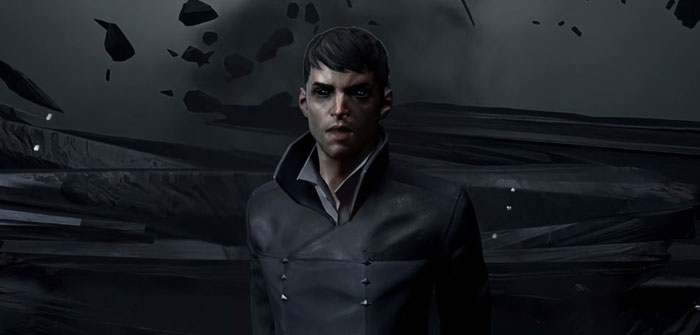
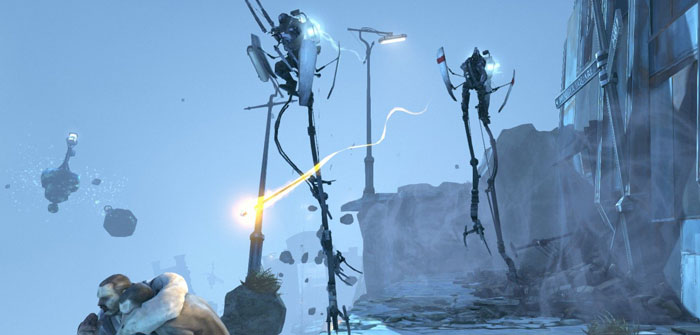
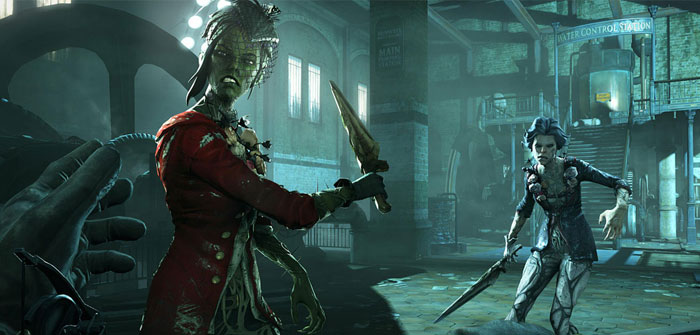
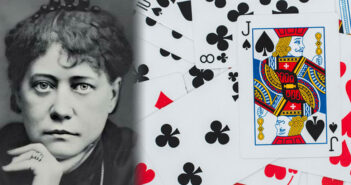
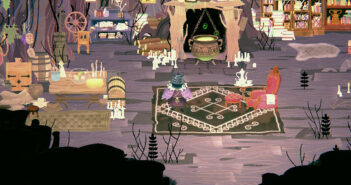

1 Comment
It is stated by one of her witches in the manor that Delilah can see glimpses of the future while in the Void, and that she saw Emily being crowned empress.